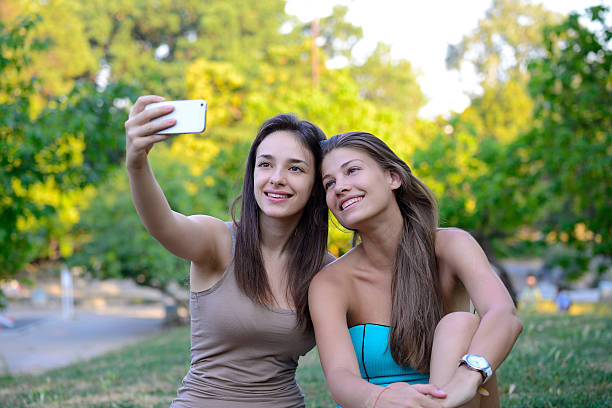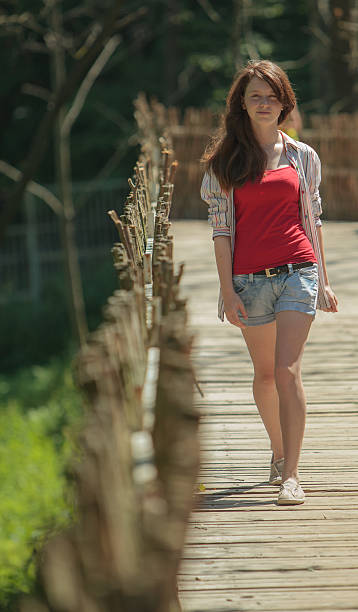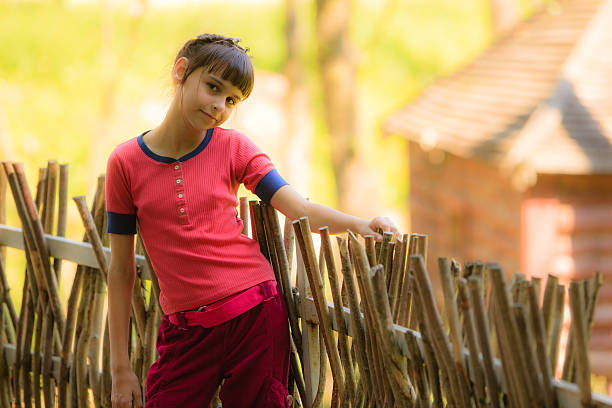Candid.Teens: Exploring Genuine Moments In Teenage Life
Have you ever stopped to think about what "candid" truly means for young people today? It's a fascinating idea, really, this push for authenticity, especially among teenagers. The concept of being "candid" is more than just an unposed photo; it speaks to a deeper desire to show real life, without all the filters and perfect angles. It's about genuine moments, the kind that capture everyday feelings and experiences. So, in a way, it's almost like a quiet revolution against the perfectly curated online world we often see, don't you think?
For many young people, being candid means expressing themselves in ways that feel true to who they are, whether that's through how they dress, what they share online, or simply how they interact with friends. This kind of raw honesty can be incredibly refreshing, offering a glimpse into their daily routines and spontaneous actions. It's a shift from always trying to look a certain way, to just being themselves, which is a pretty powerful thing, actually.
This article will explore what "candid.teens" means in today's world, looking at how young people embrace authenticity and what it means for their digital lives. We'll also touch on how we can appreciate these genuine moments respectfully, and what it means for everyone involved, you know, in terms of privacy and being considerate.
- Pining For Kim By Tailblazer
- Sean Hannity Wedding Date
- Joel Michael Singer
- Securely Connect Remoteiot P2p Ssh Windows 10
- Chris Evans Dick Pic
Table of Contents
- Understanding Candidness in Youth Culture
- The Rise of Authentic Self-Expression
- Social Media and the Unfiltered Trend
- Ethical Considerations for Capturing Candid Moments
- Celebrating Genuine Teenage Experiences
- Frequently Asked Questions About Candid.Teens
Understanding Candidness in Youth Culture
The idea of "candid" for teenagers today is quite different from what it might have been for previous generations. It's not just about a surprise photograph; it's a whole approach to life, particularly how they show up in their digital spaces. Young people, often called Gen Z, are growing up with social media as a constant backdrop, and they are, in some respects, pushing back against the polished perfection that once dominated these platforms. They seem to prefer content that feels real, a little messy, and truly reflective of their actual lives, rather than something that looks too staged.
This push for candidness shows up in various ways. You might see it in the casual, unedited photos they post, or in the way they share everyday activities without much fuss. It's a rejection of the idea that everything needs to be perfect for public consumption. Instead, there's a growing appreciation for vulnerability and the everyday. This means embracing the ordinary, the unexpected, and the unscripted moments that make up their lives. It's a move toward showing their true selves, even the bits that aren't glamorous, which is pretty brave, if you think about it.
This shift reflects a desire for connection that feels more genuine. When teens see others sharing their authentic selves, it creates a sense of relatability and community. It helps them feel less alone in their experiences, knowing that others also have their ups and downs. This focus on the real helps build stronger bonds, both online and offline, because it encourages honesty and openness. It's about finding beauty in the unplanned, which is a lovely way to look at things, really.
The Rise of Authentic Self-Expression
Teenagers are, you know, naturally exploring who they are, and this generation has unique ways of doing it. Authentic self-expression, for them, often means showing their personality through their style, their interests, and how they interact with the world around them. It's not about fitting into a mold; it's about breaking free from one. They are quite adept at finding platforms and communities where they can be truly themselves, without feeling the need to put on a show for anyone.
This desire for authenticity is a powerful driver. It influences everything from the music they listen to, to the causes they care about, and even the way they talk. They are, in a way, seeking out experiences that feel true to their inner feelings and beliefs. This means they might gravitate towards niche communities online, or pursue hobbies that genuinely excite them, rather than just following what's popular. It's about finding their voice and using it, which is a very important part of growing up, isn't it?
The rise of this kind of expression also means a greater acceptance of diversity. When everyone is encouraged to be their true self, it creates a more inclusive environment where different perspectives are valued. This generation seems to be very comfortable with individuality, celebrating what makes each person unique. They understand that authenticity isn't about being like everyone else; it's about being true to yourself, and that's a message that resonates deeply with them, it really does.
Social Media and the Unfiltered Trend
Social media, for all its curated feeds and highlight reels, is actually seeing a significant shift towards more unfiltered content, especially among younger users. Platforms that encourage spontaneous sharing, like those with disappearing stories or photo dumps, are becoming quite popular. This trend is a clear sign that teens are looking for ways to share their lives without the pressure of perfection. They want to show the mundane, the silly, and the unedited moments that make up their day, rather than just the big events.
This movement towards the unfiltered is a bit of a pushback against the traditional influencer culture, where every post seemed meticulously planned. Now, it's more about capturing a fleeting moment, a funny face, or a casual outing with friends, and sharing it without much thought to how it looks. This kind of content feels more relatable, and it helps to foster a sense of genuine connection among peers. It’s like saying, "Hey, this is my real life, and it's okay if it's not always perfect," which is a really healthy message, you know?
Apps and features that promote this kind of spontaneous sharing are gaining traction because they align with the desire for authenticity. They allow teens to share snippets of their day without the pressure of crafting a perfect image. This can reduce the stress associated with social media, making it a more enjoyable and less performative space. It's about finding joy in the everyday, and sharing that joy with others, which is, in some respects, what social media was meant to be all along.
Ethical Considerations for Capturing Candid Moments
When we talk about "candid.teens" and capturing genuine moments, it's really important to consider the ethical side of things. The line between observing and intruding can be quite thin, especially when it comes to young people. Respecting privacy and ensuring consent are absolutely key, you know, in any situation where photos or videos are being taken, particularly in public spaces. It's about being mindful and considerate of others, always.
For instance, while a public place might seem like fair game, that doesn't automatically grant permission to photograph or record individuals, especially minors, without their knowledge or consent. It's always best practice to ask for permission, or at the very least, ensure that any images captured do not invade someone's personal space or compromise their privacy. The aim should always be to celebrate genuine moments respectfully, not to exploit or expose anyone. This is something we really need to think about, very carefully.
Parents, educators, and anyone interested in youth culture should promote digital citizenship and media literacy. This means teaching young people about their rights to privacy, and also teaching others about the importance of respecting those rights. It’s about creating a safe and positive environment, both online and offline, where everyone feels comfortable being themselves without fear of unwanted attention. You can learn more about digital well-being on our site, which is pretty helpful, actually.
Ultimately, the goal is to appreciate the authenticity of teenagers in a way that empowers them, rather than making them feel vulnerable. We want to encourage their self-expression, not stifle it. This means being thoughtful about how we view and share content that involves young people, always prioritizing their safety and dignity. It's a matter of basic respect, really, and it helps everyone feel more secure and valued. We also have a page dedicated to understanding youth expression, which might be useful.
Celebrating Genuine Teenage Experiences
There is so much to appreciate about the genuine experiences of teenagers. Their candor often brings a refreshing honesty to the world, showing us what it's like to navigate life with fresh eyes and a developing sense of self. These are the years of firsts, of intense friendships, and of discovering passions. Celebrating these moments means recognizing the value in their unique perspectives and the courage it takes to be truly themselves, especially when there's so much pressure to conform.
When we embrace the candid side of teenage life, we encourage an environment where young people feel safe to explore, to make mistakes, and to grow without constant judgment. This support is incredibly important for their development. It helps them build confidence and resilience, knowing that their authentic selves are accepted and valued. It's about fostering a space where they can thrive, just as they are, which is a very important foundation for their future, isn't it?
This celebration of authenticity also means recognizing the creativity and innovation that often comes from this age group. When teens feel free to express themselves, they often come up with new ideas, new forms of art, and new ways of looking at the world. Their candidness can be a source of inspiration, showing us the beauty in everyday life and the power of genuine human connection. It's a reminder that real life, in all its unpolished glory, is often the most beautiful thing of all, you know?
Frequently Asked Questions About Candid.Teens
What does 'candid' mean for teenagers today?
For teenagers today, "candid" often means being authentic and showing their true selves, especially online. It's about sharing unposed photos, unedited videos, and real-life moments without trying to make everything look perfect. It's a move away from highly curated content towards something more genuine and relatable. This approach helps them connect with friends and express their personality in a way that feels true to who they are, which is pretty neat.
How do teens share authentic moments online?
Teens share authentic moments online in several ways, often using features like "photo dumps" on Instagram, short-form video platforms where spontaneous clips are common, or even just sharing casual, unedited photos in group chats. They tend to prefer content that feels less polished and more "in the moment," showing their everyday lives, hobbies, and interactions with friends. This approach makes their online presence feel more personal and real, you know, for their peers.
Is it okay to take candid photos of people in public?
Taking candid photos of people in public raises important ethical questions, especially when it involves teenagers. While public spaces generally allow photography, it's always best to prioritize respect and privacy. It's usually not okay to capture images that invade someone's personal space, cause distress, or could be used in a way that compromises their dignity or safety. For minors, consent from a guardian is often needed, and it's always best to be thoughtful about how such images are used or shared, very much so. The best practice is always to ask for permission or ensure faces are not identifiable if the photo is for general public interest and not focused on an individual.

320+ Candid Beauty Teenage Girls Heat Stock Photos, Pictures & Royalty

310+ Candid Beauty Teenage Girls Heat Stock Photos, Pictures & Royalty

310+ Candid Beauty Teenage Girls Heat Stock Photos, Pictures & Royalty